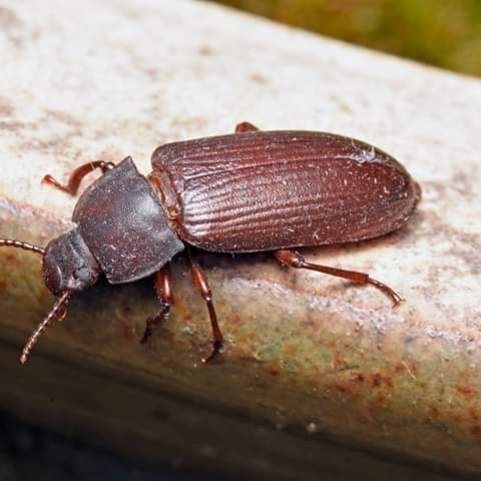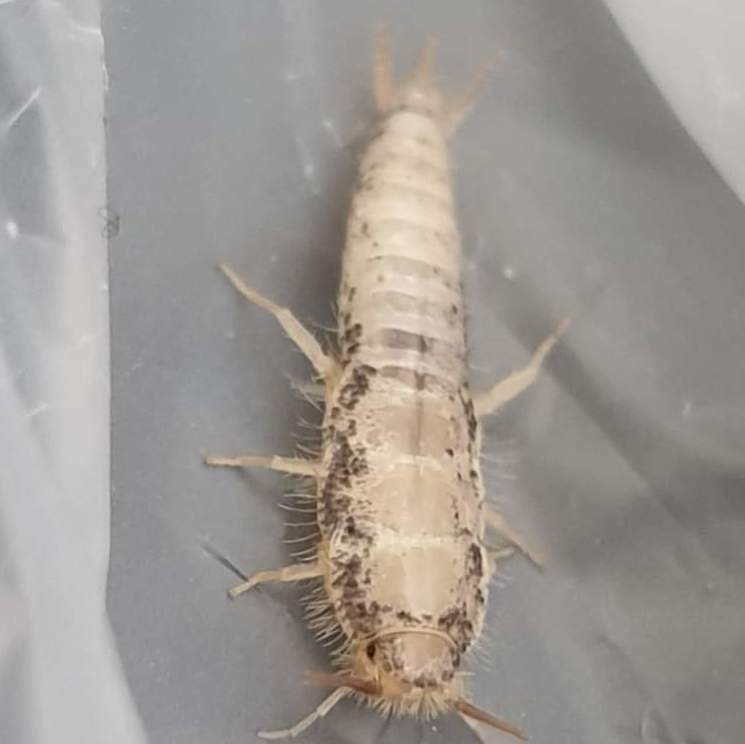Total beetle control in Reading from a local pest control company
Beetles belong to the largest Order of insects known as Coleoptera, with over 360,000 recorded species that we would term as a beetle, included in this class are the weevils. Both of these types will be found in just about every environment and some of these are classed as pests especially in stored food products.
Beetle treatments in Reading and throughout Berkshire
Beetle larvae are also pests in homes and businesses across the region; from woolly bears which are the larvae of the carpet beetle munching away on your woollen carpets to the maggot like larvae of the Drugstore beetle that actually, as it name suggests, eats stored pills and medicines.
Beetles lay their eggs at a typical rate of around 100 over three to four weeks, these are laid on the food source for that particular species and why we call these SPI’s – Stored Product Insects. Usually its items like grain where the larvae burrow into the kernels before pupating and transforming into an adult beetle.
Damage caused by beetles to food supplies
As the beetle larvae burrow through stored foodstuffs like grain and nuts, the infested material becomes contaminated by pupal cocoons, skin casts and dead insects with the larvae even able to eat their way through packaging to get at the goods inside.
Heavy beetle infestations can lead to mould growth ruining stored flour and grain increasing costs, and in the case of carpet beetles which are a common domestic pest, the hairs on the larvae that give them the distinctive ‘woolly bear’ look can irritate skin and eyes and lead to allergic reactions.
There are five common beetle pests that affect people in Reading, Wokingham and Woodley and these are:
Carpet Beetles
Larder Beetles
Weevils
Bird mites
Silverfish

Having problems with carpet beetles?
Carpet beetles spend the summer months flying around feeding on pollen and nectar from your garden flowers, after mating the female will fly indoors and lay her eggs on woollen, silk and fur items found in clothing and carpets. They also lay eggs in old birds’ nests where the larvae will eat feathers and any organic matter left behind and the larvae will take around a year to develop into an adult beetle.
Around 3mm in length with a rounded body similar in size and shape to a ladybird with an irregular pattern of white, brown and yellow patches; their larvae are the distinctive woolly bears: a bristle covered stripy caterpillar like insect.

Larder beetles in Reading
Larder beetles are a large beetle pest that infests kitchens and food storage rooms around the area and they will eat any scrap of food they can find but with a preference for meat and animal skins, this is another beetle that may enter your home through an old birds nest in the loft.
Larder beetles have a dark coloured shell with a broad pale strip running across the middle, up to 8mm in length, the larvae will bore into solid material like plasterboard to pupate causing damage to items and buildings.

Weevils can be a problem
The three most common types of weevil in the UK are the Saw-toothed Grain beetle, the Rice weevil and the Grain weevil; these will target stored grain, rice, cereals, nuts, seeds and flour and for business owners these insects pose a risk of failing to comply with the Food Safety Regulations 2004 meaning fines and possibly closure of the business.
Due to their habitat they can be difficult to eradicate, often the best way is through removal and destruction of the foodstuffs, thorough cleaning and chemical treatments to the surrounding areas.
Weevils come in a variety of shapes and sizes but generally they are around 5mm to 6mm in size and have a distinctive elongated snout holding the chewing mouthparts.

Bird mites are real pests!
Bird mites are bloodsucking parasites that live on birds and in a domestic situation these will often be starlings and feral pigeons, the problem arises when the birds leave the nest and the mites travel down through cracks and holes around electrical cables into bedrooms where they start to feed on us.
Bird mites are extremely small, around the size of a poppy seed, before they feed, they are transparent but show up as black dots when fed, they have a short lifespan but occur in huge numbers.

Silverfish in Reading
Although strictly not an insect in the beetle family, this wingless insect is a common pest in homes and business premises just about everywhere; silverfish eat starchy foods like adhesives found in book bindings, foodstuffs and general kitchen debris, some household paint, photos and even dandruff! If water is available, silverfish can survive a year without eating, these insects cause contamination of stored foodstuffs and damage to stored items.
Silverfish are primitive insects and being nocturnal are found in kitchens and bathrooms at night, around 18mm in length these are a light grey colour with a tapering body with long antennae at the front and rear of the body.
Professional pest control protecting businesses across Berkshire
Beetles inhabit a wide variety of environments and eat a range of items, for businesses involved in the food chain these are a serious pest where professional control is a requirement, a beetle infestation will lead to food contamination and issues arising from the businesses failure to implement sufficient quality pest control.
As a business with any pest infestation, you risk sanctions from Environmental Health in the form of fines and even business closure if you have not adopted sufficient control of your hygiene and food storage systems. Any pest infestation is seen as a failure of due diligence from the business owners’ part and one easily avoided through a monitoring contract from a professional pest control company.




